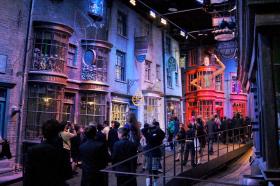Former Amarilloan produces study Bible
By Mike Haynes
If you looked
on top of night stands next to beds in this part of the world or watched people
walking in and out of churches in the region, you’d see names like Scofield,
Ryrie and MacArthur on the spines of a lot of Bibles.
Of course,
those men didn’t write the Bible. Guys like Moses and Paul did that. But Cyrus
Scofield published a “study Bible” in 1909 that included his commentary
alongside the actual scriptures. In 1978, Charles Ryrie did the same, and John
MacArthur contributed his version in 1997. Those preachers and theologians offered
their wisdom in attempts to help Bible readers understand what they were
reading.
 |
| Jud Wilhite |
One of the
best study Bibles is “The Student Bible,” first published in 1986 with notes
and commentary by two of my favorite Christian writers, Philip Yancey and Tim
Stafford. Aimed at a young audience, the Student Bible has made navigating the
Word of God easier for a couple of generations of seekers.
Now there’s
a study Bible with a name on the spine that’s familiar to many in Amarillo.
It’s the 2013 “Uncensored Truth Bible for New Beginnings.” The pastor and
writer offering his insights on its pages is Jud Wilhite, a product of Amarillo
schools and of Paramount Terrace Christian Church, now called Hillside
Christian Church.
Wilhite still
has family in Amarillo but for the past few years has been pastor of Central
Christian Church in Las Vegas – no, not New Mexico, but Sin City itself.
He has
several books to his credit, including “Stripped: Uncensored Grace on the
Streets of Vegas,” and it’s no surprise that he prefers to call his current
home “Grace City.” Wilhite has told his own story many times, that of being a
rebellious teenager who got into trouble but found his way to God through
family and his Amarillo church.
After
college and serving on the Paramount Terrace church staff, he was called to a
glitzy venue where he now oversees four Las Vegas campuses, an online community
and a prison ministry while turning out books and now a Bible.
The
“Uncensored Truth” Bible is the New Living Translation, which Wilhite likes
because it’s “readable.” He would be the first to tell you that the actual
words of God’s prophets and apostles are the most important part of these 1,177
pages, but our former Amarillo neighbor has written a 32-page introduction that
21st century readers can relate to.
Not that references to actor Hugh Jackman’s
physical training or the Tonight Show’s on-the-street interviews are necessary
to understand the Bible, but Wilhite’s informal writing style is a magnet that
might lead people into the meat of God’s Word.
He offers
tips on figuring out what’s literal and what’s figurative in the Bible and how
to keep things in context. He’s like C.S. Lewis in that he is intellectually bright
but able to relate to regular people’s lives.
In nine
“Uncensored Truth” sections, Wilhite writes about his own experiences and what
God has taught him. “Save Me From Myself” recalls a recent visit to the
Amarillo house where he grew up and looking at the floor in his old bedroom: “That
was where I got on my knees one night alone and asked God to help me face the
addiction in my life.”
As a Las
Vegas pastor, Wilhite interacts with people from all walks of life who face challenges
they can’t just leave in Vegas. He knows they can leave them with Jesus,
though, if the message can get through to them. This Bible is one way God can
reach their hearts.
 |
| Lori and Jud Wilhite |
* * *
Jud
Wilhite’s wife, Lori, also from Amarillo, has her own 2013 book out. She and
Brandi Wilson, a Nashville pastor’s spouse, wrote “Leading and Loving It:
Encouragement for Pastors’ Wives and Women in Leadership.” They also head up a
ministry called Leading and Loving It.























